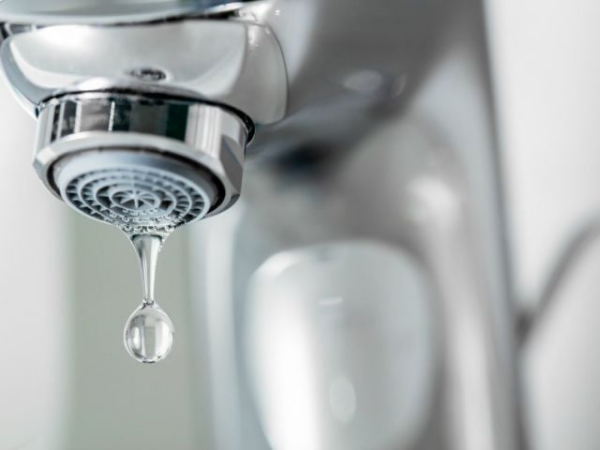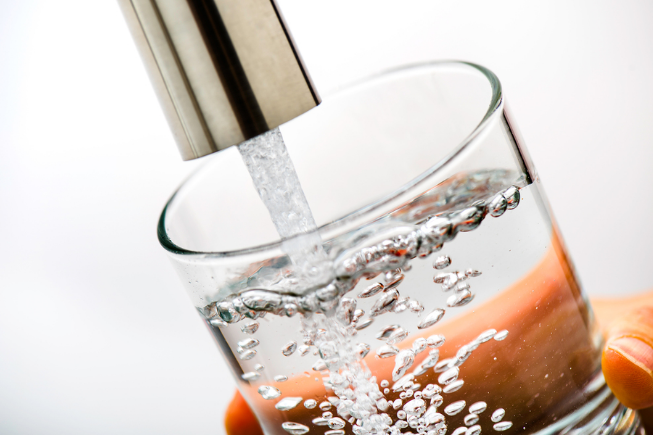Water is essential for life, but not all tap water is safe for consumption. Even treated municipal water can contain contaminants that pose risks to human health. These impurities can come from various sources, including industrial waste, agricultural runoff, aging pipes, and natural environmental factors.
Understanding the common contaminants found in tap water and how to effectively remove them can help protect your health and improve the quality of your drinking water. In this article, we will explore the most frequent pollutants in tap water and the best methods for purification.
Common Contaminants in Tap Water

1. Bacteria and Viruses
Harmful microorganisms, such as E. coli, Giardia, and Cryptosporidium, can contaminate tap water, leading to severe gastrointestinal illnesses. These contaminants usually enter water sources through sewage leaks, agricultural runoff, and improper waste disposal.
2. Heavy Metals
Heavy metals like lead, arsenic, mercury, and cadmium can leach into tap water from corroded pipes or industrial waste. Long-term exposure to these metals can cause serious health problems, including neurological damage, kidney disease, and developmental issues in children.
3. Chlorine and Chloramine
Municipal water treatment plants often add chlorine and chloramine to disinfect water and kill bacteria. While these chemicals effectively reduce microbial contamination, they can produce harmful byproducts known as trihalomethanes (THMs) and haloacetic acids (HAAs), which are linked to cancer and other health risks.
4. Fluoride
Fluoride is commonly added to tap water to prevent tooth decay. However, excessive fluoride consumption has been associated with dental fluorosis, bone disease, and neurological issues. Some people prefer to remove fluoride from their drinking water due to health concerns.
5. Nitrates and Nitrites
Nitrates and nitrites come from agricultural fertilizers, animal waste, and septic systems. High levels of nitrates in drinking water can be dangerous, especially for infants, as they can cause a condition called blue baby syndrome, which reduces the ability of blood to carry oxygen.
6. Pesticides and Herbicides
Chemical pesticides and herbicides used in agriculture often seep into groundwater and surface water. Many of these substances have been linked to hormonal imbalances, reproductive problems, and cancer.
7. Pharmaceutical Residues
Pharmaceutical drugs, including antibiotics, hormones, and painkillers, can enter tap water through human waste, improper disposal, and industrial runoff. Long-term exposure to these substances can lead to antibiotic resistance and hormonal disruptions.
8. Microplastics
Microplastics are tiny plastic particles that can enter water sources through industrial pollution, plastic waste, and water treatment processes. Studies suggest that consuming microplastics may contribute to toxicity and inflammation in the human body.
How to Remove Contaminants from Tap Water
Now that we’ve identified the common contaminants in tap water, let’s explore the most effective ways to remove them.

1. Reverse Osmosis (RO) Filtration
Best for removing: Heavy metals, fluoride, nitrates, bacteria, viruses, and pharmaceutical residues.
How it works:
Reverse osmosis filtration uses a semipermeable membrane to remove up to 99% of contaminants from water. It is one of the most effective purification methods, making it ideal for households concerned about tap water safety.
Pros:
✔ Removes most contaminants, including heavy metals and chemicals.
✔ Improves taste and odor of water.
✔ Ideal for areas with poor water quality.
Cons:
✘ Wastes some water during the filtration process.
✘ Removes beneficial minerals, requiring remineralization.
2. Activated Carbon Filters
Best for removing: Chlorine, chloramine, pesticides, herbicides, and organic chemicals.
How it works:
Activated carbon filters use adsorption technology to trap impurities in water, effectively reducing chemical contaminants and improving taste.
Pros:
✔ Affordable and easy to install.
✔ Enhances water taste by removing chlorine and organic compounds.
Cons:
✘ Not effective for heavy metals, bacteria, or viruses.
✘ Needs regular replacement to maintain efficiency.
3. Ultraviolet (UV) Purification
Best for removing: Bacteria, viruses, and parasites.
How it works:
UV purifiers use ultraviolet light to destroy the DNA of harmful microorganisms, making them inactive.
Pros:
✔ Highly effective against bacteria and viruses.
✔ Does not alter the taste or chemical composition of water.
Cons:
✘ Does not remove heavy metals, chemicals, or sediments.
✘ Requires electricity to operate.
4. Distillation
Best for removing: Heavy metals, fluoride, nitrates, and bacteria.
How it works:
Distillation involves boiling water and collecting the steam, leaving contaminants behind. This method is highly effective for removing dissolved impurities.
Pros:
✔ Removes nearly all contaminants.
✔ Ideal for areas with highly polluted water sources.
Cons:
✘ Slow process and requires energy.
✘ Can remove beneficial minerals, requiring remineralization.
5. Ion Exchange Filters
Best for removing: Lead, calcium, magnesium, and nitrates.
How it works:
Ion exchange systems replace unwanted ions (such as heavy metals) with harmless ones (like sodium or potassium).
Pros:
✔ Effectively softens water by removing hard minerals.
✔ Reduces heavy metal contamination.
Cons:
✘ Not effective for bacteria or organic chemicals.
✘ Requires periodic maintenance.
Choosing the Right Water Filtration System
Selecting the best filtration method depends on the specific contaminants in your tap water. Here’s a quick guide:
- If your water contains heavy metals: Choose Reverse Osmosis (RO) or distillation.
- If your water has bacteria and viruses: Use UV purification or RO filtration.
- If chlorine and bad taste are concerns: Opt for an activated carbon filter.
- If you want fluoride removal: Choose RO or distillation.
- For an all-in-one solution: A multi-stage water purifier combining RO, UV, and activated carbon is the best option.
Conclusion
Tap water can contain various contaminants that may pose health risks if consumed over time. From bacteria and heavy metals to chlorine and microplastics, it is crucial to be aware of the quality of your drinking water.
Fortunately, several filtration methods—such as reverse osmosis, UV purification, and activated carbon filters—can help remove these impurities and provide safe, clean drinking water for you and your family.
Investing in a high-quality water purification system is one of the best ways to ensure better health, improved hydration, and peace of mind. Stay informed, choose the right water filter, and enjoy pure, contaminant-free water every day!
--------------------------------------------------------------------------------------------------------------
SANAKY VIETNAM., CO LTD - Manufacturer of Chest Freezer - Upright Cooler, Transformer, RO Water Purifier...
? Website: www.sanaky-vn.com
☎ Hotline: (+84) 986123903
 Vietnamese
Vietnamese  English
English  Chinese
Chinese  French
French  Spanish
Spanish  Russian
Russian  Arabic
Arabic  Portuguese
Portuguese